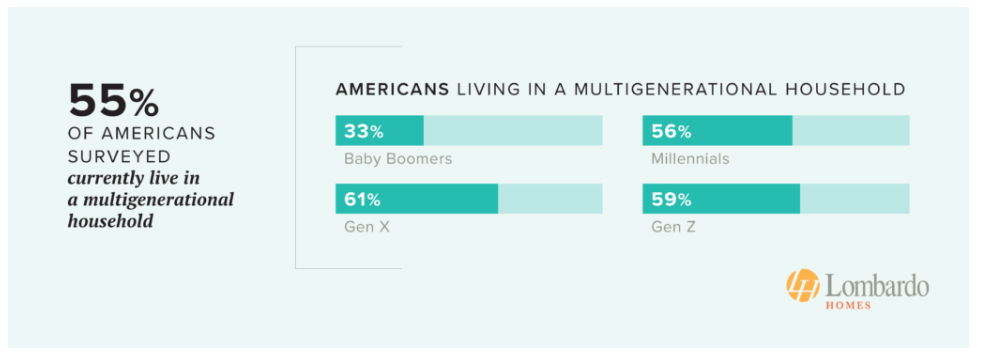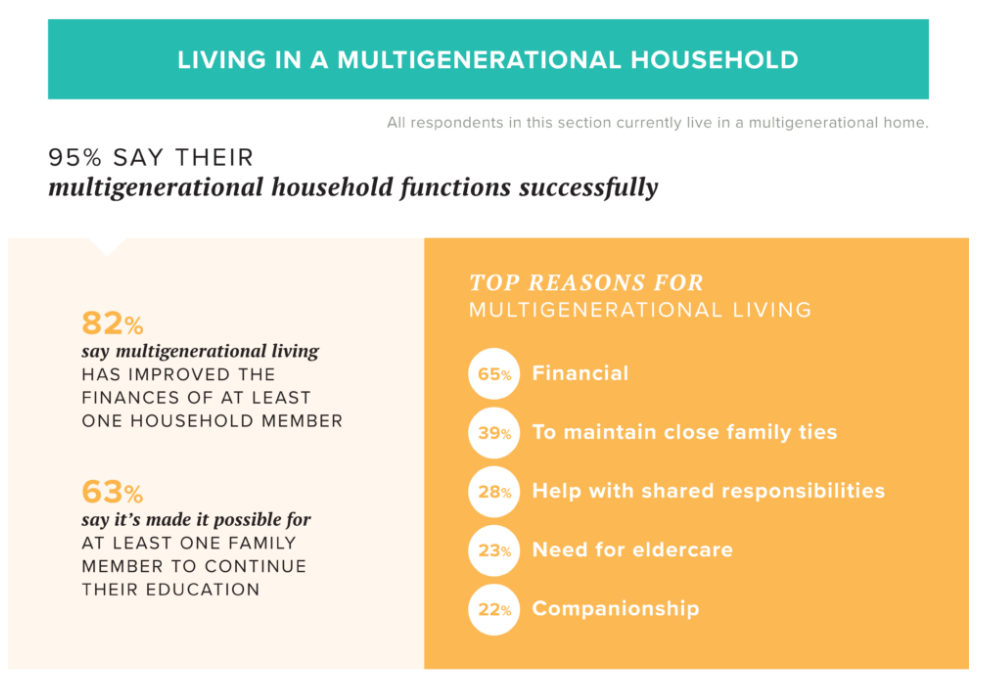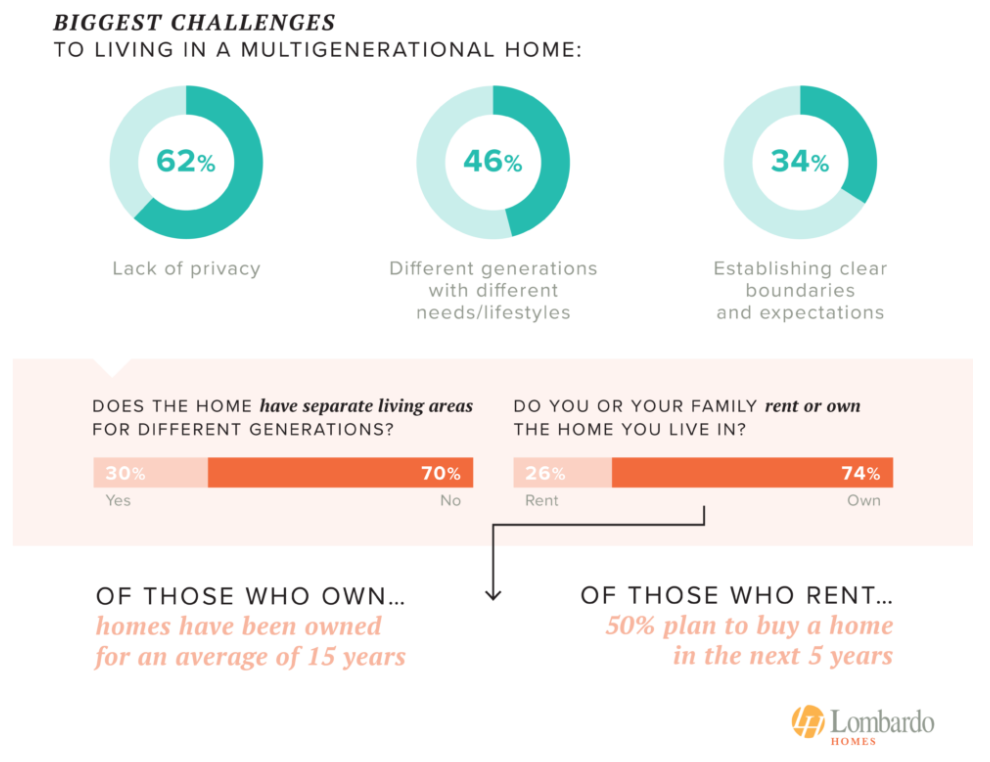Young adults residing with family for financial reasons, middle-aged homeowners caring for ailing parents or aging grandparents, or close-knit kin cohabiting because they enjoy one another’s company—the reasons vary, but, per Pew Research Center, more than 59 million Americans today live in multigenerational households.
That’s about four times what it was in the 1970s. Such domestic configurations almost doubled during the past five decades, while other types of household formations grew by far less.

“Driven by financial considerations, elder care needs, and the desire for stronger family connections, multigenerational living has become more commonplace in the United States,” said researchers with Lombardo Homes, who conducted a study, hoping to better understand the dynamics of, and American levels of interest in, living in a house with parents, grandparents, grandchildren, adult children, or any combination of adult family members.
“As economic pressures continue to rise, multigenerational households are likely to become an even more practical solution for many American families,” the study’s authors found.
Researchers for the new home construction company determined that, of the 55% of U.S. residents living in multigenerational households, some 61% belong to the 44-59 age group known as Generation X. Generation Z, adults age 18-27, make up about 59% of multigenerational homesteads. Respectively, 56% of Millennials, ages 28-43, and 33% of Baby Boomers, ages 60-78, belong to multigenerational households.

A collective 95% of those in multigenerational domestic situations say their households function successfully.
While 65% cited finances as the chief motivator, finances improved for at least one resident in 85% of these households. And in 63%, at least one member was able to continue their education thanks to the arrangement.
Following financial reasons, top explanations for multigenerational living include maintaining close family ties, according to 39%, sharing responsibilities, said 28%, need for eldercare, said 23%, and desire for companionship, noted 22% of respondents from multigenerational homes.
Of respondents not residing in a multigenerational home, 31% say they are thinking about it.
In fact, 33% of Gen X-ers and Millennials said they are considering the move, followed by 28% of Gen Zs and 25% of Baby Boomers.
Most respondents, three of four, would rather live at home with older family members than pay for elder care facilities. And a large majority, some 83%, would choose to have a family member live in their homes to help take care of young children, rather than pay for childcare.
The biggest downside to a multigenerational household, 62% of respondents who live with family said, is a lack of privacy. Establishing clear boundaries and expectations was a challenge cited by 34% of multigenerational household residents who responded.

Of particular interest to sponsors of the study, who are in the home construction business, the house itself is vital to the success of multigenerational life. Just three in 10 surveyed said their homes include separate living areas for different generations, a lack that researchers call a “potential barrier” to multigenerational living.
To view the full report including methodology and respondents’ demographics, visit lombardohomes.com.





